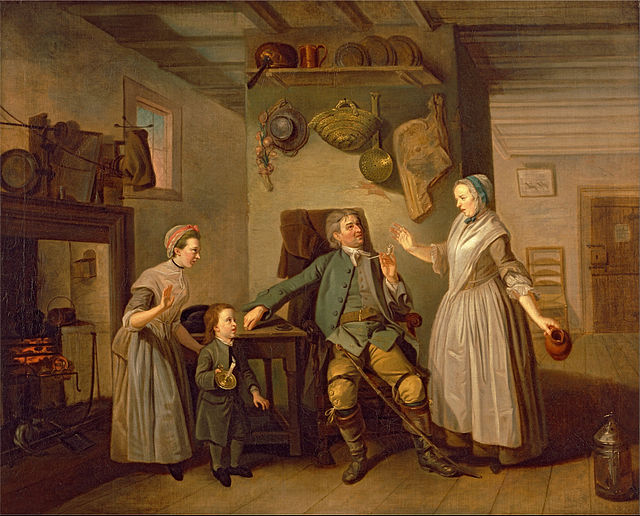Arthur Devis was an English artist whose father, Anthony, was progenitor of what became a family dynasty of painters and writers. The place of Arthur Devis in art history is generally as painter of the type of portrait now called a conversation piece. After moving to London and apprenticeship to a Flemish topographical artist there, he switched to portraiture and acquired a considerable reputation, although this success did not last. Unable to adapt to later fashionable artistic currents, his commissions declined and his work was largely forgotten after his death until the 20th century revival of interest in the conversation piece.
A self-portrait dating from 1742-4
Portrait of a Lady in a Landscape (1750) by Arthur Devis
Hoghton Tower in Lancashire
Breaking-Up Day at Dr Clayton's School at Salford (c. 1738)
A conversation piece refers to a group portrait in a domestic or landscape setting depicting persons chatting or otherwise socializing with each other. The persons depicted may be members of a family as well as friends, members of a society or hunt, or some other grouping who are shown sharing common activities such as hunts, meals, or musical parties. It was an especially popular genre in 18th-century England, beginning from the 1720s, largely due to the influence of William Hogarth. Similar paintings can also be found in other periods and outside of England. The setting of various figures "conversing" in an intimate setting appears to call for small-scale paintings, but some artists treated this subject manner in the Grand Manner, with almost life-size figures.
The Jones Family Conversation Piece, by William Hogarth, 1730.
David Garrick and Mary Bradshaw in David Garrick's "The Farmer's Return" by Johann Zoffany, 1762.
Family Group in a Garden by Arthur Devis, 1749.







